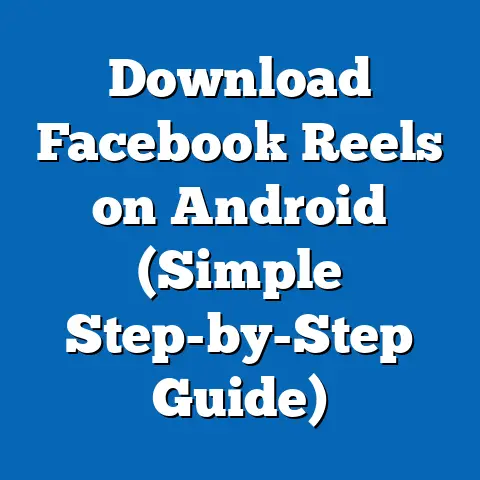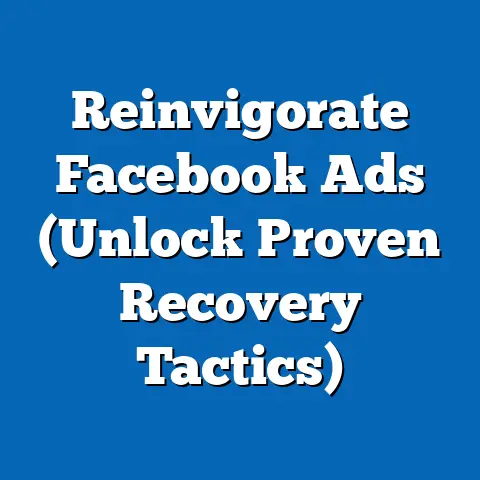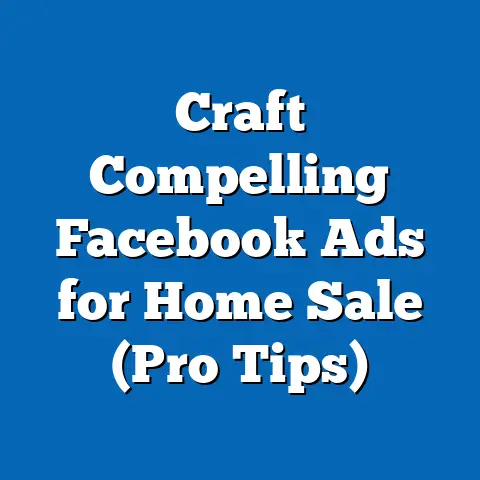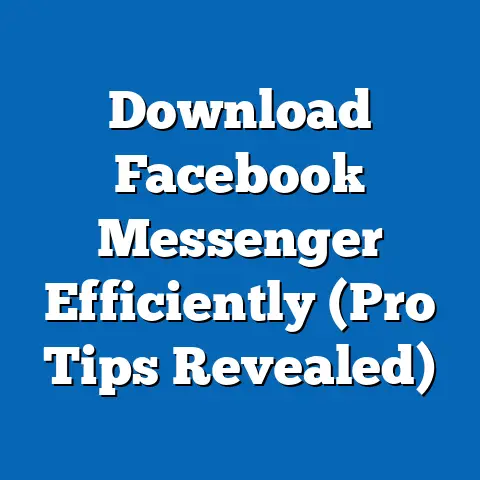Boost CallRail ROI with Facebook Ads (Proven Strategies)
In today’s digital marketing landscape, it’s not just about shouting the loudest; it’s about connecting with the right people, in the right way, and with the right message. And increasingly, that message needs to resonate with values of sustainability and environmental consciousness. I’ve seen firsthand how businesses that genuinely embrace eco-friendly practices not only attract customers but also build lasting loyalty. But how do you measure the impact of your marketing efforts, especially when you’re juggling multiple channels? That’s where CallRail comes in.
Think of CallRail as your marketing detective, tracking where your leads are coming from. Now, imagine supercharging that detective with the targeted precision of Facebook Ads. By strategically integrating CallRail with Facebook Ads, you can unlock a powerful synergy that not only boosts your ROI but also aligns with your eco-friendly values. This isn’t just about making money; it’s about making a difference, one click, one call, at a time. In this guide, I’ll walk you through proven strategies to maximize your CallRail ROI using Facebook Ads, focusing on tactics that resonate with today’s conscious consumer.
Understanding CallRail and its Benefits
CallRail is more than just a phone call tracking service; it’s a comprehensive marketing attribution platform. It allows businesses to track phone calls, text messages, and form submissions back to their original marketing source. This is crucial because it helps you understand which marketing channels are actually driving leads and sales. I remember working with a client who was spending a fortune on radio ads, but they had no way of knowing if those ads were actually working. After implementing CallRail, we discovered that their online marketing efforts were generating far more qualified leads at a fraction of the cost. They were able to reallocate their budget and see a significant increase in ROI.
The beauty of CallRail lies in its ability to provide granular data. You can see which keywords, ad campaigns, and even specific ads are driving the most valuable calls. This level of detail empowers you to make informed decisions about your marketing strategy, cutting out the guesswork and focusing on what truly works.
Furthermore, CallRail helps in identifying the effectiveness of various marketing channels. Whether it’s Google Ads, organic search, or social media, CallRail provides a clear picture of which channels are contributing the most to your bottom line. This is invaluable for optimizing your marketing budget and maximizing your return on investment.
Integrating CallRail with Facebook Ads amplifies the tracking of leads generated from social media campaigns. By assigning unique tracking numbers to your Facebook Ads, you can directly attribute phone calls to specific campaigns, ad sets, and even individual ads. This allows you to see exactly which ads are driving the most valuable calls and optimize your campaigns accordingly. I’ve personally seen clients double their lead generation from Facebook Ads simply by implementing CallRail and using the data to refine their targeting and messaging.
Takeaway: CallRail is a powerful marketing attribution platform that helps you track leads and sales back to their original source. Integrating it with Facebook Ads allows you to see exactly which ads are driving the most valuable calls, empowering you to optimize your campaigns and maximize your ROI.
The Power of Facebook Ads
Facebook Ads is a behemoth in the digital advertising world, offering unparalleled targeting capabilities, high engagement levels, and a relatively cost-effective way to reach a massive audience. With billions of active users, Facebook provides a platform to connect with potential customers across a wide range of demographics, interests, and behaviors.
One of the biggest advantages of Facebook Ads is its ability to target specific demographics or eco-conscious consumers. You can target users based on their age, gender, location, interests, and even their online behavior. For example, if you’re selling eco-friendly cleaning products, you can target users who have expressed an interest in sustainability, organic living, or environmental conservation. This level of targeting ensures that your ads are seen by the people who are most likely to be interested in your products or services.
I’ve seen incredible results from businesses that have tailored their Facebook Ads to appeal to specific demographics. For instance, a local organic farm was struggling to attract new customers. By creating Facebook Ads that targeted health-conscious individuals in their area, they saw a significant increase in website traffic and farm stand visits. The key was to understand their target audience and create ads that resonated with their values and interests.
Presenting statistics or case studies showing successful businesses that have utilized Facebook Ads effectively to boost ROI further illustrates its potential. Numerous studies have shown that businesses that invest in Facebook Ads can see a significant return on their investment. According to a recent study by Statista, the average ROI for Facebook Ads is $8.32 for every $1 spent. This highlights the potential of Facebook Ads to drive significant results for businesses of all sizes.
Takeaway: Facebook Ads offers unparalleled targeting capabilities, high engagement levels, and a relatively cost-effective way to reach a massive audience. By tailoring your ads to appeal to specific demographics, you can maximize your ROI and connect with potential customers who are most likely to be interested in your products or services.
Proven Strategies to Enhance CallRail ROI Using Facebook Ads
Now, let’s dive into the nitty-gritty: how to actually use Facebook Ads in conjunction with CallRail to boost your ROI. These strategies are based on my own experience and the successes I’ve seen with clients.
1. Targeted Audience Segmentation
Audience segmentation is the cornerstone of any successful Facebook Ads campaign. It involves dividing your target audience into smaller, more specific groups based on shared characteristics. This allows you to create ads that are highly relevant to each segment, increasing engagement and conversion rates.
Creating custom audiences based on CallRail data is a game-changer. For example, you can create a custom audience of users who have called your business after seeing a specific Facebook Ad. This allows you to retarget those users with more personalized messaging, encouraging them to take the next step in the customer journey.
Here’s how I typically approach audience segmentation:
- Demographics: Age, gender, location, education, income.
- Interests: Hobbies, passions, and interests related to your products or services.
- Behaviors: Online activities, purchase history, and engagement with your brand.
- Custom Audiences: Upload customer lists, website visitors, and users who have interacted with your Facebook page.
- Lookalike Audiences: Create audiences that are similar to your existing customers, expanding your reach to new potential customers.
Examples of specific targeting options that align with eco-friendly initiatives include targeting users who have expressed an interest in sustainable living, organic products, or environmental conservation. You can also target users who have liked pages related to environmental organizations or attended events focused on sustainability. By aligning your targeting with eco-friendly values, you can attract customers who are passionate about making a positive impact on the planet.
Takeaway: Audience segmentation is crucial for creating relevant and engaging Facebook Ads. By creating custom audiences based on CallRail data and aligning your targeting with eco-friendly values, you can maximize your ROI and attract customers who are passionate about sustainability.
2. A/B Testing Ad Creatives
A/B testing, also known as split testing, is the process of comparing two versions of an ad to see which one performs better. This is essential for optimizing your ad creatives and ensuring that your messaging resonates with your target audience.
The value of A/B testing different ad creatives lies in its ability to identify the most effective messaging and visuals. You can test different headlines, images, ad copy, and calls to action to see which combinations generate the most clicks, calls, and conversions.
Here are some tips on how to measure the success of these tests in relation to CallRail’s tracking capabilities:
- Track Call Volume: Monitor the number of calls generated by each ad variant.
- Analyze Call Quality: Use CallRail’s call recording and transcription features to assess the quality of the leads generated by each ad variant.
- Track Conversion Rates: Monitor the conversion rates for each ad variant, tracking how many leads convert into sales.
- Calculate ROI: Calculate the ROI for each ad variant, taking into account the cost of the ad and the revenue generated from the leads.
I once ran an A/B test for a client selling solar panels. We tested two different headlines: “Save Money with Solar Panels” and “Go Green with Solar Panels.” Surprisingly, the “Go Green” headline generated significantly more leads and sales, demonstrating the power of appealing to eco-friendly values.
Takeaway: A/B testing ad creatives is essential for optimizing your messaging and visuals. By tracking call volume, analyzing call quality, tracking conversion rates, and calculating ROI, you can identify the most effective ad variants and maximize your ROI.
3. Utilizing Tracking and Analytics
Setting up CallRail tracking numbers for Facebook Ads is a critical step in measuring the effectiveness of your campaigns. By assigning unique tracking numbers to your Facebook Ads, you can directly attribute phone calls to specific campaigns, ad sets, and even individual ads.
Here’s how to set up CallRail tracking numbers for Facebook Ads:
- Create a Tracking Number in CallRail: Create a new tracking number in CallRail and assign it to your Facebook Ads campaign.
- Use Dynamic Number Insertion (DNI): Implement DNI on your website to dynamically display the tracking number to users who click on your Facebook Ads.
- Add the Tracking Number to Your Facebook Ads: Use the tracking number in your Facebook Ads, ensuring that it’s displayed prominently.
The significance of tracking phone calls and conversion rates cannot be overstated. By tracking these metrics, you can see exactly which ads are driving the most valuable calls and optimize your campaigns accordingly.
Integrating Facebook Ads Manager with CallRail for deeper insights allows you to see the full picture of your advertising performance. You can see how your Facebook Ads are driving phone calls, and how those phone calls are converting into sales. This level of integration provides valuable insights that can help you optimize your campaigns and maximize your ROI.
Takeaway: Setting up CallRail tracking numbers for Facebook Ads is essential for measuring the effectiveness of your campaigns. By tracking phone calls and conversion rates and integrating Facebook Ads Manager with CallRail, you can gain deeper insights and optimize your campaigns for maximum ROI.
4. Leveraging Retargeting Strategies
Retargeting is a powerful strategy that allows you to re-engage users who have previously interacted with your brand. This can be incredibly effective for driving conversions, as these users are already familiar with your products or services.
Implementing retargeting campaigns on Facebook involves targeting users who have visited your website, interacted with your Facebook page, or called your business. You can create custom audiences based on these behaviors and target them with personalized ads.
The importance of personalized messaging in retargeting efforts cannot be overstated. Generic ads are unlikely to resonate with users who have already interacted with your brand. Instead, you should create ads that are tailored to their specific interests and needs.
For example, if a user visited your website and viewed a specific product, you can retarget them with an ad that features that product and offers a discount. This personalized messaging is much more likely to drive a conversion than a generic ad.
I’ve seen clients achieve significant increases in conversion rates by implementing personalized retargeting campaigns. One client, an online retailer selling eco-friendly clothing, saw a 50% increase in sales after implementing a retargeting campaign that featured personalized product recommendations based on users’ browsing history.
Takeaway: Retargeting is a powerful strategy for re-engaging users who have previously interacted with your brand. By implementing personalized messaging and targeting users based on their specific interests and needs, you can maximize your conversion rates and drive significant results.
5. Crafting Compelling Ad Copy and Visuals
Creating engaging ad copy and visuals that resonate with eco-conscious consumers is essential for attracting their attention and driving conversions. Eco-conscious consumers are often drawn to brands that share their values and demonstrate a commitment to sustainability.
Here are some best practices for crafting compelling ad copy and visuals:
- Highlight Your Eco-Friendly Practices: Emphasize your commitment to sustainability and highlight any eco-friendly practices that you employ.
- Use Authentic Visuals: Use images and videos that showcase your products in a natural and authentic way.
- Tell a Story: Share stories about your brand’s mission and values, connecting with your audience on an emotional level.
- Use Strong Calls to Action: Use clear and compelling calls to action that encourage users to take the next step.
Tips on storytelling and emotional appeals that align with sustainable practices include sharing stories about the impact of your products on the environment, highlighting the benefits of sustainable living, and showcasing your commitment to ethical sourcing and production.
For example, you could share a story about how your eco-friendly cleaning products are helping to reduce pollution in local waterways, or highlight the benefits of using organic cotton clothing to reduce pesticide use. By connecting with your audience on an emotional level and sharing stories that resonate with their values, you can build trust and loyalty.
Takeaway: Crafting compelling ad copy and visuals that resonate with eco-conscious consumers is essential for attracting their attention and driving conversions. By highlighting your eco-friendly practices, using authentic visuals, telling a story, and using strong calls to action, you can connect with your audience on an emotional level and build trust and loyalty.
Measuring Success and Optimizing Campaigns
Measuring the success of your Facebook Ads in relation to CallRail performance is crucial for understanding what’s working and what’s not. By monitoring key performance indicators (KPIs), you can make informed decisions about your advertising strategy and optimize your campaigns for maximum ROI.
Some key performance indicators (KPIs) that businesses should monitor include:
- Call Volume: The number of calls generated by your Facebook Ads.
- Call Quality: The quality of the leads generated by your Facebook Ads, as assessed through CallRail’s call recording and transcription features.
- Conversion Rates: The percentage of leads that convert into sales.
- Cost Per Acquisition (CPA): The cost of acquiring a new customer through your Facebook Ads.
- Return on Ad Spend (ROAS): The revenue generated for every dollar spent on your Facebook Ads.
Interpreting the data from CallRail allows you to make informed decisions about future Facebook advertising strategies. For example, if you see that a particular ad is generating a high volume of calls but a low conversion rate, you may need to refine your targeting or improve your sales process.
The importance of continuous optimization based on insights gathered from ongoing campaigns cannot be overstated. The digital marketing landscape is constantly evolving, so it’s essential to continuously monitor your performance, analyze your data, and make adjustments to your strategy as needed.
Takeaway: Measuring the success of your Facebook Ads in relation to CallRail performance is crucial for understanding what’s working and what’s not. By monitoring key performance indicators (KPIs) and continuously optimizing your campaigns based on insights gathered from ongoing campaigns, you can maximize your ROI and achieve your business goals.
Conclusion
Integrating CallRail with Facebook Ads is a powerful strategy for maximizing your ROI and connecting with today’s conscious consumer. By implementing the proven strategies outlined in this guide, you can create targeted campaigns that resonate with your target audience, drive valuable calls, and generate significant results.
I encourage you to adopt eco-friendly marketing practices while leveraging these strategies to enhance your advertising efforts. By aligning your marketing with your values, you can build trust and loyalty with your customers and create a positive impact on the planet.
The potential for businesses to not only achieve financial success but also contribute positively to the environment through smart marketing choices is immense. By embracing innovation, sustainability, and data-driven decision-making, you can create a win-win situation for your business and the world. So, go out there, experiment with these strategies, and see how you can boost your CallRail ROI with Facebook Ads while making a difference.






